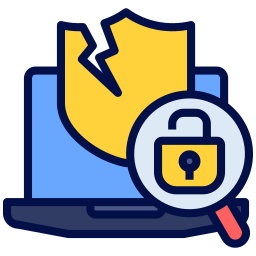
Caltrans Company Cyber Security Posture
ca.govFrom roads less traveled to highways supporting California’s demanding commute. The California Department of Transportation (Caltrans) manages more than 50,000 miles of California's highway and freeway lanes, provides inter-city rail services, permits more than 400 public-use airports and special-use hospital heliports, and works with local agencies to keep California moving. More than the road workers, we are California’s transportation infrastructure; established in 1895, Caltrans has been active in moving the people and commerce of California and continues to model the way in innovative transportation systems. Caltrans specializes in many areas related to transportation: Engineering, Environmental Analysis, Information Technology, Maintenance, Equipment, Transportation Planning, Land Surveys, Right of Way, Finance, Traffic Operations, Aeronautics, Legal, and Administration It is our commitment to the residents of California that keeps us honest in our mission of providing a safe and reliable transportation network that serves all people and respects the environment.
Caltrans Company Details
caltrans
12107 employees
90551.0
922
Government Administration
ca.gov
Scan still pending
CAL_3173240
In-progress
Between 900 and 1000
This score is AI-generated and less favored by cyber insurers, who prefer the TPRM score.
 Caltrans Global Score
Caltrans Global Score.png)

Caltrans Company Scoring based on AI Models
| Model Name | Date | Description | Current Score Difference | Score |
|---|---|---|---|---|
| AVERAGE-Industry | 03-12-2025 | This score represents the average cybersecurity rating of companies already scanned within the same industry. It provides a benchmark to compare an individual company's security posture against its industry peers. | N/A | Between 900 and 1000 |
Caltrans Company Cyber Security News & History
| Entity | Type | Severity | Impact | Seen | Url ID | Details | View |
|---|---|---|---|---|---|---|---|
| California Department of Public Health | Breach | 100 | 4 | 11/2021 | CAL184124422 | Link | |
Rankiteo Explanation : Attack with significant impact with customers data leaksDescription: The sensitive medical information of citizens of California was exposed by a misconfigured database managed by the California Department of Public Health. The misconfiguration resulted from an error made by a third-party contractor and led to the breach of names, dates of birth, addresses, and Covid-19-related health information of the citizens. The department set up a dedicated call center to help out the people of California affected by the breach. | |||||||
| California Department of Justice | Breach | 80 | 4 | 06/2022 | CAL234911022 | Link | |
Rankiteo Explanation : Attack with significant impact with customers data leaksDescription: The California Department of Justice’s 2022 Firearms Dashboard Portal accidentally went live with publicly-accessible files that include identifying information of California gun owners. The leaked information included the person’s full name, race, home address, date of birth, and date their permit was issued. The investigation revealed that the leaked files included home addresses, full names, and dates of birth for all seven custodial officers, 63 people with a place of employment permit, and 420 reserve officers. However, the leaked information was soon removed by the department. | |||||||
| California Department of Finance | Ransomware | 100 | 4 | 12/2022 | CAL2251141222 | Link | |
Rankiteo Explanation : Attack with significant impact with customers data leaksDescription: The Finance Department for the state of California was a recent target of Lockbit, the notorious Russian-linked ransomware group. The group allegedly posted on the dark web to threaten them that if the ransom demands aren’t met by December 24, they will leak the stolen data. The hackers also published online the number of directories and files that contained over 246,000 files and over 114,000 folders totalling 75.3GB of data, as displayed in the properties dialogue. However, an initial access broker (IAB) was offering a way past the department’s cyber defences for $30,000 per breached server. | |||||||
| California Department of Motor Vehicles | Data Leak | 50 | 2 | 11/2019 | CAL9230423 | Link | |
Rankiteo Explanation : Attack limited on finance or reputationDescription: Seven government agencies now have access to some drivers' Social Security numbers thanks to a data breach at the California Department of Motor Vehicles. According to the organisation, the breach had an impact on 3,200 people for at least the previous four years. The DMV says that it was not hacked and that no private persons or organisations received the information. According to the DMV, steps were taken right away to fix the access issue and make sure that no further private information was leaked. | |||||||
| California Department of Social Services | Breach | 60 | 3 | 1/2023 | CAL601072525 | Link | |
Rankiteo Explanation : Attack with significant impact with internal employee data leaksDescription: The California Department of Social Services reported a data breach on February 16, 2023, involving an incident that occurred on January 6, 2023. An employee emailed a document containing personal information, including names and Social Security numbers, to a personal account. The breach potentially affected an unspecified number of individuals. Corrective actions have been implemented to minimize future risks. | |||||||
| California Department of Social Services | Breach | 50 | 2 | 7/2014 | CAL733072525 | Link | |
Rankiteo Explanation : Attack limited on finance or reputationDescription: The California Department of Social Services (CDSS) reported a data breach involving the unauthorized release of personal information on July 17, 2014. The breach, which occurred on July 16, 2014, involved accidentally discarded confidential documents that may have contained names, mailing addresses, dates of birth, and Social Security numbers. The number of individuals affected is currently unknown. | |||||||
| Department of Motor Vehicles | Breach | 50 | 2 | 9/2015 | CAD846072525 | Link | |
Rankiteo Explanation : Attack limited on finance or reputationDescription: The California Department of Motor Vehicles (CA DMV) reported a data breach on November 6, 2015, involving an erroneous disclosure of personal information on September 28, 2015. The breach affected the Riverside Probation Department and involved the accidental transmission of names, dates of birth, physical descriptions, and driver license numbers, but did not include Social Security Numbers. | |||||||
| Department of Health Care Services | Breach | 50 | 2 | 12/2012 | CAL011072625 | Link | |
Rankiteo Explanation : Attack limited on finance or reputationDescription: The California Department of Health Care Services (DHCS) reported a data breach involving the erroneous mailing of Beneficiary Identification Cards (BIC) due to a computer programming error. The breach occurred between December 10 and December 18, 2012, potentially affecting an unknown number of individuals, with exposed information including names, Client Index Numbers, dates of birth, and genders. Affected parties were informed on December 21, 2012, and a new card was to be issued by January 1, 2013. | |||||||
| California Department of Child Support Services | Breach | 85 | 4 | 3/2012 | CAL152072625 | Link | |
Rankiteo Explanation : Attack with significant impact with customers data leaksDescription: On March 29, 2012, the California Department of Child Support Services reported a data breach involving missing storage devices that potentially contained personal information of parents, caregivers, and children. The breach occurred on March 12, 2012, and involved personal information such as names, addresses, Social Security numbers, and health insurance details. The agency is working with International Business Machines (IBM) and Iron Mountain Inc. to locate the missing devices. | |||||||
| California Department of Child Support Services | Breach | 60 | 3 | 3/2022 | CAL518072625 | Link | |
Rankiteo Explanation : Attack with significant impact with internal employee data leaksDescription: The California Office of the Attorney General reported a data breach involving the California Department of Child Support Services (DCSS) on September 13, 2022. The breach occurred on or around March 8, 2022, when an employee sent an email to their personal account containing personal information, including individuals' names, IRS Tax Intercept amounts, and IRS collection sources. The total number of affected individuals is currently unknown. | |||||||
| California Department of Public Health | Breach | 100 | 5 | 3/2018 | CAL543072625 | Link | |
Rankiteo Explanation : Attack threatening the organization's existenceDescription: On May 23, 2018, the California Department of Public Health (CDPH) reported a data breach that occurred on March 12, 2018, involving the theft of documents and a laptop from a contractor's vehicle. This incident potentially exposed personal and health information such as names, Social Security numbers, and health insurance information. The breach highlights the vulnerability of sensitive data when handled by third-party contractors and the importance of robust security measures to protect personal information. | |||||||
| California Department of Justice | Breach | 100 | 5 | 11/2011 | CAL619072625 | Link | |
Rankiteo Explanation : Attack threatening the organization's existenceDescription: The California Department of Justice reported on May 11, 2012, that hackers affiliated with Anonymous accessed private email accounts of a retired agent from the Computer and Technology Crime High-Tech Response Team (CATCH) in November 2011. The breach potentially exposed personal information, including names and financial account information, although the exact number of individuals affected and specific details regarding the breach are unknown. | |||||||
Caltrans Company Subsidiaries

From roads less traveled to highways supporting California’s demanding commute. The California Department of Transportation (Caltrans) manages more than 50,000 miles of California's highway and freeway lanes, provides inter-city rail services, permits more than 400 public-use airports and special-use hospital heliports, and works with local agencies to keep California moving. More than the road workers, we are California’s transportation infrastructure; established in 1895, Caltrans has been active in moving the people and commerce of California and continues to model the way in innovative transportation systems. Caltrans specializes in many areas related to transportation: Engineering, Environmental Analysis, Information Technology, Maintenance, Equipment, Transportation Planning, Land Surveys, Right of Way, Finance, Traffic Operations, Aeronautics, Legal, and Administration It is our commitment to the residents of California that keeps us honest in our mission of providing a safe and reliable transportation network that serves all people and respects the environment.
Access Data Using Our API

Get company history
.png)
Caltrans Cyber Security News
California awards $300M in federal funding for safer roadways
The funding, part of the federal Highway Safety Improvement Program (HSIP), will provide local communities with critical federal aid to reduce fatal and serious ...
IT Leaders, State Projects Recognized as ‘Best of California’ for 2024
The Best of California Awards, presented during the California Government Innovation Summit, acknowledge high-achieving state IT officials ...
CalMoneySmart 2023-24
Funding Source Notes: Senate Bill 455 was signed into law on October 2, 2019 establishing the Financial Empowerment Fund for $4 million. In 2021 ...
California seeking generative AI ideas to help lighten traffic jams
California transportation officials published a request for information in pursuit of new ideas for using generative artificial intelligence ...
Caltrans Seeks to Harness the Power of GenAI to Improve Safety and Traffic Congestion Across California
WHAT YOU NEED TO KNOW: Caltrans has awarded the first GenAI vendor contracts in California history, testing innovative solutions to protect ...
Figure 5. Caltrans AMT Vehicle. 3) Colorado's Department of...
The objective of this report is to summarize the state-of-the-art, as well as the state-of-the-practice, of the autonomous maintenance technology development.
States struggle to hire cybersecurity experts
State governments, which routinely handle tax records, Social Security numbers and other sensitive data, are struggling to hire ...
Profiles in Government: Caltrans Works to Modernize Across the Enterprise
Implementation of Apptio's IT planning module in March delivered a central location for data in the IT program's Spend Plan and a home for ...
DGS Warns of Cyberscammer Posing as Vendor
State cybersecurity authorities are warning of a potential email phishing scam in which the attacker is trying to gain Bidder Credentials.

Caltrans Similar Companies

TAHRI Mohamed Bechar University
L'Université de Béchar Est un établissement universitaire Algérien crée pour la première fois en 1986. INES puis CUB pour Centre Universitaire de Béchar et le 07/01/2009 déclaré comme université. Depuis peu, le monde est entré dans le 3ème millénaire. Un millénaire qui nous impose des défis au

Ministry of the Interior and Kingdom Relations
Het ministerie van BZK borgt de kernwaarden van de democratie. BZK staat voor een goed en slagvaardig openbaar bestuur en een overheid waar burgers op kunnen vertrouwen. BZK draagt eraan bij dat burgers kunnen wonen in betaalbare, veilige en energiezuinige woningen in een buurt waar iedereen meetelt

US Government Accountability Office
For more information about GAO, please visit www.gao.gov. General Information The U.S. Government Accountability Office (GAO) is an independent, nonpartisan agency that works for Congress. Often called the "congressional watchdog," GAO investigates how the federal government spends taxpayer dolla

Internal Revenue Service
Welcome to the Internal Revenue Service’s official LinkedIn account. Here, you will find the latest and greatest news and updates for taxpayers to help them understand and meet their tax responsibilities. Also, this is a place to learn about a meaningful career with the IRS. Check out the tabs above

Department of Education
The Department of Education is responsible for delivering the Victorian Government’s commitment to making Victoria the Education State, where all Victorians have the best learning and development experience, regardless of their background, postcode or circumstances. Education remains a cornerstone f

Gouvernement du Québec – Carrières
Travailler dans la fonction publique du Québec, c'est plus qu'une carrière! Réparti(e)s dans une vingtaine de ministères et une soixantaine d'organismes à travers le Québec, tous les gestes posés par les employé(e)s de la fonction publique façonnent l’avenir de la société et contribuent à améliorer

Frequently Asked Questions
Explore insights on cybersecurity incidents, risk posture, and Rankiteo's assessments.
Caltrans CyberSecurity History Information
How many cyber incidents has Caltrans faced?
Total Incidents: According to Rankiteo, Caltrans has faced 12 incidents in the past.
What types of cybersecurity incidents have occurred at Caltrans?
Incident Types: The types of cybersecurity incidents that have occurred incidents Ransomware, Breach and Data Leak.
How does Caltrans detect and respond to cybersecurity incidents?
Detection and Response: The company detects and responds to cybersecurity incidents through third party assistance with International Business Machines (IBM), Iron Mountain Inc. and remediation measures with Issuing new Beneficiary Identification Cards and communication strategy with Informing affected parties and remediation measures with Corrective actions implemented and containment measures with Steps were taken right away to fix the access issue and recovery measures with Dedicated call center set up to help affected individuals.
Incident Details
Can you provide details on each incident?

Incident : Data Breach
Title: California Department of Justice Email Breach
Description: Hackers affiliated with Anonymous accessed private email accounts of a retired agent from the Computer and Technology Crime High-Tech Response Team (CATCH) in November 2011.
Date Detected: 2011-11-01
Date Publicly Disclosed: 2012-05-11
Type: Data Breach
Attack Vector: Email Compromise
Threat Actor: Anonymous

Incident : Data Breach
Title: Data Breach at California Department of Public Health
Description: Theft of documents and a laptop from a contractor's vehicle, potentially exposing personal and health information.
Date Detected: 2018-05-23
Date Publicly Disclosed: 2018-05-23
Type: Data Breach
Attack Vector: Physical Theft

Incident : Data Breach
Title: Data Breach at California Department of Child Support Services
Description: An employee sent an email to their personal account containing personal information, including individuals' names, IRS Tax Intercept amounts, and IRS collection sources.
Date Detected: 2022-09-13
Date Publicly Disclosed: 2022-09-13
Type: Data Breach
Attack Vector: Email
Vulnerability Exploited: Human Error
Threat Actor: Internal Employee

Incident : Data Breach
Title: California Department of Child Support Services Data Breach
Description: The California Department of Child Support Services reported a data breach involving missing storage devices that potentially contained personal information of parents, caregivers, and children.
Date Detected: 2012-03-29
Type: Data Breach
Attack Vector: Physical Theft/Loss

Incident : Data Breach
Title: California DHCS Data Breach
Description: The California Department of Health Care Services (DHCS) reported a data breach involving the erroneous mailing of Beneficiary Identification Cards (BIC) due to a computer programming error.
Date Detected: 2012-12-21
Date Resolved: 2013-01-01
Type: Data Breach
Attack Vector: Computer Programming Error
Vulnerability Exploited: Computer Programming Error

Incident : Data Breach
Title: CA DMV Data Breach
Description: The California Department of Motor Vehicles (CA DMV) reported a data breach on November 6, 2015, involving an erroneous disclosure of personal information on September 28, 2015. The breach affected the Riverside Probation Department and involved the accidental transmission of names, dates of birth, physical descriptions, and driver license numbers, but did not include Social Security Numbers.
Date Detected: 2015-11-06
Date Publicly Disclosed: 2015-11-06
Type: Data Breach
Attack Vector: Erroneous Disclosure

Incident : Data Breach
Title: California Department of Social Services Data Breach
Description: The California Department of Social Services (CDSS) reported a data breach involving unauthorized release of personal information on July 17, 2014. The breach, which occurred on July 16, 2014, involved accidentally discarded confidential documents that may have contained names, mailing addresses, dates of birth, and Social Security numbers. The number of individuals affected is currently unknown.
Date Detected: 2014-07-17
Date Publicly Disclosed: 2014-07-17
Type: Data Breach
Attack Vector: Accidental Discard of Confidential Documents

Incident : Data Breach
Title: California Department of Social Services Data Breach
Description: A document containing personal information, including names and Social Security numbers, was emailed to a personal account by an employee.
Date Detected: 2023-02-16
Date Publicly Disclosed: 2023-02-16
Type: Data Breach
Attack Vector: Email
Vulnerability Exploited: Human Error
Threat Actor: Internal Employee
Motivation: Accidental

Incident : Data Breach
Title: California DMV Data Breach
Description: Seven government agencies now have access to some drivers' Social Security numbers thanks to a data breach at the California Department of Motor Vehicles.
Type: Data Breach

Incident : Ransomware
Title: Ransomware Attack on California Finance Department
Description: The Finance Department for the state of California was targeted by Lockbit, a Russian-linked ransomware group. The group threatened to leak stolen data if ransom demands weren't met by December 24. The hackers published details of the stolen data, including 246,000 files and 114,000 folders totaling 75.3GB. An initial access broker was offering access to the department's cyber defenses for $30,000 per breached server.
Type: Ransomware
Threat Actor: Lockbit
Motivation: Financial

Incident : Data Leak
Title: California Department of Justice Firearms Dashboard Portal Data Leak
Description: The California Department of Justice’s 2022 Firearms Dashboard Portal accidentally went live with publicly-accessible files that include identifying information of California gun owners. The leaked information included the person’s full name, race, home address, date of birth, and date their permit was issued. The investigation revealed that the leaked files included home addresses, full names, and dates of birth for all seven custodial officers, 63 people with a place of employment permit, and 420 reserve officers. However, the leaked information was soon removed by the department.
Type: Data Leak

Incident : Data Breach
Title: California Department of Public Health Data Breach
Description: The sensitive medical information of citizens of California was exposed by a misconfigured database managed by the California Department of Public Health. The misconfiguration resulted from an error made by a third-party contractor and led to the breach of names, dates of birth, addresses, and Covid-19-related health information of the citizens. The department set up a dedicated call center to help out the people of California affected by the breach.
Type: Data Breach
Attack Vector: Misconfigured Database
Vulnerability Exploited: Error by a third-party contractor
What are the most common types of attacks the company has faced?
Common Attack Types: The most common types of attacks the company has faced is Breach.
How does the company identify the attack vectors used in incidents?
Identification of Attack Vectors: The company identifies the attack vectors used in incidents through Email.
Impact of the Incidents
What was the impact of each incident?

Incident : Data Breach CAL619072625
Data Compromised: Names, Financial Account Information

Incident : Data Breach CAL543072625
Data Compromised: names, Social Security numbers, health insurance information

Incident : Data Breach CAL518072625
Data Compromised: Individuals' names, IRS Tax Intercept amounts, IRS collection sources

Incident : Data Breach CAL152072625
Data Compromised: names, addresses, Social Security numbers, health insurance details

Incident : Data Breach CAL011072625
Data Compromised: names, Client Index Numbers, dates of birth, genders

Incident : Data Breach CAD846072525
Data Compromised: Names, Dates of Birth, Physical Descriptions, Driver License Numbers

Incident : Data Breach CAL733072525
Data Compromised: names, mailing addresses, dates of birth, Social Security numbers

Incident : Data Breach CAL601072525
Data Compromised: Names, Social Security numbers

Incident : Data Breach CAL9230423
Data Compromised: Social Security numbers

Incident : Ransomware CAL2251141222
Data Compromised: 246,000 files and 114,000 folders totaling 75.3GB

Incident : Data Leak CAL234911022
Data Compromised: full name, race, home address, date of birth, date their permit was issued

Incident : Data Breach CAL184124422
Data Compromised: names, dates of birth, addresses, Covid-19-related health information
What types of data are most commonly compromised in incidents?
Commonly Compromised Data Types: The types of data most commonly compromised in incidents are Names, Financial Account Information, Personal Information, Health Information, Individuals' names, IRS Tax Intercept amounts, IRS collection sources, Personal Information, names, Client Index Numbers, dates of birth, genders, Names, Dates of Birth, Physical Descriptions, Driver License Numbers, names, mailing addresses, dates of birth, Social Security numbers, Personal Information, Social Security numbers, full name, race, home address, date of birth, date their permit was issued, names, dates of birth, addresses and Covid-19-related health information.
Which entities were affected by each incident?

Incident : Data Breach CAL619072625
Entity Type: Government Agency
Industry: Law Enforcement
Location: California, USA

Incident : Data Breach CAL543072625
Entity Type: Government Agency
Industry: Healthcare
Location: California, USA

Incident : Data Breach CAL518072625
Entity Type: Government Agency
Industry: Public Administration
Location: California, USA

Incident : Data Breach CAL152072625
Entity Type: Government Agency
Industry: Public Administration
Location: California, USA

Incident : Data Breach CAL011072625
Entity Type: Government Agency
Industry: Healthcare
Location: California, USA
Customers Affected: Unknown

Incident : Data Breach CAD846072525
Entity Type: Government Agency
Industry: Law Enforcement
Location: Riverside, California

Incident : Data Breach CAL733072525
Entity Type: Government Agency
Industry: Public Sector
Location: California, USA

Incident : Data Breach CAL601072525
Entity Type: Government Agency
Industry: Public Administration
Location: California, USA
Customers Affected: Unspecified number of individuals

Incident : Data Breach CAL9230423
Entity Type: Government Agency
Industry: Government
Location: California, USA
Customers Affected: 3200

Incident : Ransomware CAL2251141222
Entity Type: Government
Industry: Public Administration
Location: California

Incident : Data Leak CAL234911022
Entity Type: Government
Industry: Public Administration
Location: California

Incident : Data Breach CAL184124422
Entity Type: Government Agency
Industry: Healthcare
Location: California
Customers Affected: Citizens of California
Response to the Incidents
What measures were taken in response to each incident?

Incident : Data Breach CAL152072625
Third Party Assistance: International Business Machines (IBM), Iron Mountain Inc.

Incident : Data Breach CAL011072625
Remediation Measures: Issuing new Beneficiary Identification Cards
Communication Strategy: Informing affected parties

Incident : Data Breach CAL601072525
Remediation Measures: Corrective actions implemented

Incident : Data Breach CAL9230423
Containment Measures: Steps were taken right away to fix the access issue

Incident : Data Breach CAL184124422
Recovery Measures: Dedicated call center set up to help affected individuals
How does the company involve third-party assistance in incident response?
Third-Party Assistance: The company involves third-party assistance in incident response through International Business Machines (IBM), Iron Mountain Inc..
Data Breach Information
What type of data was compromised in each breach?

Incident : Data Breach CAL619072625
Type of Data Compromised: Names, Financial Account Information

Incident : Data Breach CAL543072625
Type of Data Compromised: Personal Information, Health Information
Sensitivity of Data: High
Personally Identifiable Information: True

Incident : Data Breach CAL518072625
Type of Data Compromised: Individuals' names, IRS Tax Intercept amounts, IRS collection sources
Sensitivity of Data: High
Data Exfiltration: True
Personally Identifiable Information: True

Incident : Data Breach CAL152072625
Type of Data Compromised: Personal Information
Sensitivity of Data: High
Personally Identifiable Information: names, addresses, Social Security numbers, health insurance details

Incident : Data Breach CAL011072625
Type of Data Compromised: names, Client Index Numbers, dates of birth, genders
Number of Records Exposed: Unknown
Personally Identifiable Information: names, Client Index Numbers, dates of birth, genders

Incident : Data Breach CAD846072525
Type of Data Compromised: Names, Dates of Birth, Physical Descriptions, Driver License Numbers
Sensitivity of Data: High
Personally Identifiable Information: True

Incident : Data Breach CAL733072525
Type of Data Compromised: names, mailing addresses, dates of birth, Social Security numbers
Sensitivity of Data: High
Personally Identifiable Information: True

Incident : Data Breach CAL601072525
Type of Data Compromised: Personal Information
Number of Records Exposed: Unspecified
Sensitivity of Data: High
Personally Identifiable Information: Names, Social Security numbers

Incident : Data Breach CAL9230423
Type of Data Compromised: Social Security numbers
Number of Records Exposed: 3200
Sensitivity of Data: High
Personally Identifiable Information: Social Security numbers

Incident : Ransomware CAL2251141222
Number of Records Exposed: 246,000 files and 114,000 folders
Data Exfiltration: Yes

Incident : Data Leak CAL234911022
Type of Data Compromised: full name, race, home address, date of birth, date their permit was issued
Sensitivity of Data: High
Personally Identifiable Information: True

Incident : Data Breach CAL184124422
Type of Data Compromised: names, dates of birth, addresses, Covid-19-related health information
Sensitivity of Data: High
Personally Identifiable Information: Yes
What measures does the company take to prevent data exfiltration?
Prevention of Data Exfiltration: The company takes the following measures to prevent data exfiltration: Issuing new Beneficiary Identification Cards, Corrective actions implemented.
How does the company handle incidents involving personally identifiable information (PII)?
Handling of PII Incidents: The company handles incidents involving personally identifiable information (PII) through was Steps were taken right away to fix the access issue.
Ransomware Information
Was ransomware involved in any of the incidents?
How does the company recover data encrypted by ransomware?
Data Recovery from Ransomware: The company recovers data encrypted by ransomware through Dedicated call center set up to help affected individuals.
References
Where can I find more information about each incident?

Incident : Data Breach CAL619072625
Source: California Department of Justice
Date Accessed: 2012-05-11

Incident : Data Breach CAL543072625
Source: California Department of Public Health
Date Accessed: 2018-05-23

Incident : Data Breach CAL518072625
Source: California Office of the Attorney General
Date Accessed: 2022-09-13

Incident : Data Breach CAL733072525
Source: California Department of Social Services
Date Accessed: 2014-07-17

Incident : Data Breach CAL601072525
Source: California Department of Social Services
Date Accessed: 2023-02-16
Where can stakeholders find additional resources on cybersecurity best practices?
Additional Resources: Stakeholders can find additional resources on cybersecurity best practices at and Source: California Department of JusticeDate Accessed: 2012-05-11, and Source: California Department of Public HealthDate Accessed: 2018-05-23, and Source: California Office of the Attorney GeneralDate Accessed: 2022-09-13, and Source: CA DMV Data Breach ReportDate Accessed: 2015-11-06, and Source: California Department of Social ServicesDate Accessed: 2014-07-17, and Source: California Department of Social ServicesDate Accessed: 2023-02-16.
Investigation Status
How does the company communicate the status of incident investigations to stakeholders?
Communication of Investigation Status: The company communicates the status of incident investigations to stakeholders through was Informing affected parties.
Initial Access Broker
How did the initial access broker gain entry for each incident?

Incident : Data Breach CAL518072625
Entry Point: Email
Post-Incident Analysis
What were the root causes and corrective actions taken for each incident?

Incident : Data Breach CAL518072625
Root Causes: Human Error

Incident : Data Breach CAL011072625
Root Causes: Computer Programming Error
Corrective Actions: Issuing new Beneficiary Identification Cards

Incident : Data Breach CAL601072525
Root Causes: Human Error
Corrective Actions: Corrective actions implemented

Incident : Data Breach CAL184124422
Root Causes: Misconfiguration by a third-party contractor
What is the company's process for conducting post-incident analysis?
Post-Incident Analysis Process: The company's process for conducting post-incident analysis is described as International Business Machines (IBM), Iron Mountain Inc..
What corrective actions has the company taken based on post-incident analysis?
Corrective Actions Taken: The company has taken the following corrective actions based on post-incident analysis: Issuing new Beneficiary Identification Cards, Corrective actions implemented.
Additional Questions
General Information
Who was the attacking group in the last incident?
Last Attacking Group: The attacking group in the last incident were an Anonymous, Internal Employee, Internal Employee and Lockbit.
Incident Details
What was the most recent incident detected?
Most Recent Incident Detected: The most recent incident detected was on 2011-11-01.
What was the most recent incident publicly disclosed?
Most Recent Incident Publicly Disclosed: The most recent incident publicly disclosed was on 2012-05-11.
What was the most recent incident resolved?
Most Recent Incident Resolved: The most recent incident resolved was on 2013-01-01.
Impact of the Incidents
What was the most significant data compromised in an incident?
Most Significant Data Compromised: The most significant data compromised in an incident were Names, Financial Account Information, names, Social Security numbers, health insurance information, Individuals' names, IRS Tax Intercept amounts, IRS collection sources, names, addresses, Social Security numbers, health insurance details, names, Client Index Numbers, dates of birth, genders, Names, Dates of Birth, Physical Descriptions, Driver License Numbers, names, mailing addresses, dates of birth, Social Security numbers, Names, Social Security numbers, Social Security numbers, 246,000 files and 114,000 folders totaling 75.3GB, full name, race, home address, date of birth, date their permit was issued, names, dates of birth, addresses and Covid-19-related health information.
Response to the Incidents
What third-party assistance was involved in the most recent incident?
Third-Party Assistance in Most Recent Incident: The third-party assistance involved in the most recent incident was International Business Machines (IBM), Iron Mountain Inc..
What containment measures were taken in the most recent incident?
Containment Measures in Most Recent Incident: The containment measures taken in the most recent incident was Steps were taken right away to fix the access issue.
Data Breach Information
What was the most sensitive data compromised in a breach?
Most Sensitive Data Compromised: The most sensitive data compromised in a breach were Names, Financial Account Information, names, Social Security numbers, health insurance information, Individuals' names, IRS Tax Intercept amounts, IRS collection sources, names, addresses, Social Security numbers, health insurance details, names, Client Index Numbers, dates of birth, genders, Names, Dates of Birth, Physical Descriptions, Driver License Numbers, names, mailing addresses, dates of birth, Social Security numbers, Names, Social Security numbers, Social Security numbers, 246,000 files and 114,000 folders totaling 75.3GB, full name, race, home address, date of birth, date their permit was issued, names, dates of birth, addresses and Covid-19-related health information.
What was the number of records exposed in the most significant breach?
Number of Records Exposed in Most Significant Breach: The number of records exposed in the most significant breach was 360.3K.
References
What is the most recent source of information about an incident?
Most Recent Source: The most recent source of information about an incident are California Department of Justice, California Department of Public Health, California Office of the Attorney General, CA DMV Data Breach Report, California Department of Social Services and California Department of Social Services.
Initial Access Broker
What was the most recent entry point used by an initial access broker?
Most Recent Entry Point: The most recent entry point used by an initial access broker was an Email.
Post-Incident Analysis
What was the most significant root cause identified in post-incident analysis?
Most Significant Root Cause: The most significant root cause identified in post-incident analysis was Human Error, Computer Programming Error, Human Error, Misconfiguration by a third-party contractor.
What was the most significant corrective action taken based on post-incident analysis?
Most Significant Corrective Action: The most significant corrective action taken based on post-incident analysis was Issuing new Beneficiary Identification Cards, Corrective actions implemented.
What Do We Measure?
















Every week, Rankiteo analyzes billions of signals to give organizations a sharper, faster view of emerging risks. With deeper, more actionable intelligence at their fingertips, security teams can outpace threat actors, respond instantly to Zero-Day attacks, and dramatically shrink their risk exposure window.
These are some of the factors we use to calculate the overall score:
Identify exposed access points, detect misconfigured SSL certificates, and uncover vulnerabilities across the network infrastructure.
Gain visibility into the software components used within an organization to detect vulnerabilities, manage risk, and ensure supply chain security.
Monitor and manage all IT assets and their configurations to ensure accurate, real-time visibility across the company's technology environment.
Leverage real-time insights on active threats, malware campaigns, and emerging vulnerabilities to proactively defend against evolving cyberattacks.




